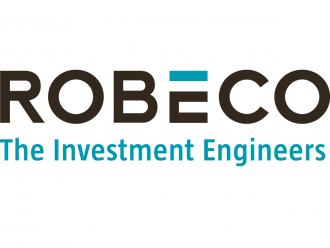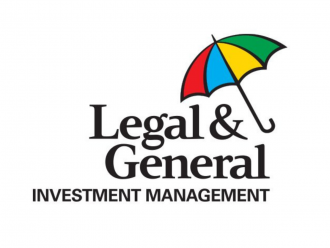Tim Manuel, UK head of responsible investment at Aon
The need to address major environmental and social issues, including the climate crisis, resource scarcity and demographic changes, is driving a worldwide industrial restructuring and shifting the basis of competitive advantage among companies. This is leading trustees to reconsider their approach to investing.
Many are asking how they can address some of world’s most pressing environmental and social challenges through their investments while continuing to deliver the competitive returns needed to get the best outcomes for their members.
Impact investing offers a way to do this. Designed to deliver investment returns and positive impacts for people and the planet, it differs from traditional investment approaches in the following ways:
- Impact investments must have an explicit intention to drive specific positive social and environmental change
- As well as measuring returns, investments are also measured by the progress they have made towards stated environmental and social aims.
The potential benefits are considerable, which explains why this is one of the faster growing segments of the responsible investment universe. From a recent survey by the Global Impact Investment Network (GIIN), impact allocations to public equity grew at the second fastest rate after real assets.1
The financial case for impact investing
As global megatrends make the future look very different than today, investment managers with the ability to identify and act on environmental and social challenges are likely to have a fuller understanding of companies’ true risk and opportunity profiles. Identifying and investing in companies that are better positioned for the future will increase the odds of achieving improved financial performance over the medium and long-term.
Early adopters of impact investing may also benefit from a positive tailwind to returns over the short to medium-term. Increasing regulation and policy actions, coupled with megatrends and concerns over transparency, are beginning to influence investor preferences, leading to increasing demand for a smaller universe of highly-rated sustainable investments and reducing demand for lower-ranked companies. This could lead to strengthening valuations for sustainable investments, driving valuations higher and supporting a return premium over the near term.
Further positive spill-over effects, which benefit all stakeholders, flow from being part of the solution. Companies with a positive impact on environmental and social outcomes, mean they are better positioned to bolster economic and market performance, while fewer risks materialise than would otherwise be the case. This can result in a virtuous cycle that helps everyone, including trustees and their members.
Opportunities to deliver impact
Impact initiatives range from specific objectives, such as a desire to improve the lives of certain demographic groups, to broader initiatives that encompass several global issues. Climate change and natural disasters, concerns around nationalism and protectionism, and socio-economic inequality emerged as the top three issues keeping investors awake at night in Aon’s 2019 Global Perspectives on Responsible Investing report 2.
The full breadth of impact opportunities is being most commonly captured using frameworks referencing the Sustainable Development Goals (SDGs) developed by the UN3. In 2015, the 193 member-states of the United Nations developed and adopted the SDGs, which have subsequently gained significant traction. Trustees and the wider investment community increasingly view the SDGs as guidance for a list of deserving goals, which trustees can choose to address broadly, or select the specific goals most important to them.
Achieving and measuring impact
Although implementing impact strategies sounds attractive, ensuring capital has a positive impact is not always straightforward. It is important to understand the type of companies, products and services that are material to impact goals. Deciding which metrics to use to measure impact also presents a challenge – easy solutions are not often apparent.
The investment and academic communities are working hard to address this. The University of Cambridge Institute for Sustainability Leadership (CISL) Investment Leaders Group, of which Aon is a member, has developed the Investment Impact Framework4. This identifies six core goals that align with the SDGs, including three environmental and three social aims, and measures progress towards meeting these goals using simple metrics.
Frameworks such this as are expected to play a valuable role in the development of ideal quantitative metrics for impact investing in future. Additionally, qualitative assessments will have a role to play in building a holistic view of impact investments – qualitative scrutiny of individual investments can lead to an improved understanding of the underlying investment rationale, impact and sustainability challenges.
Looking forward
Positive sentiment, interest and regulation around responsible investing is continuing to grow5. In turn, impact strategies are set to become an increasingly important part of trustees’ future investment considerations. For many, the ultimate question will be how to implement these strategies.
Our work with clients has shown it is important to engage as early as possible: to build understanding of the range of opportunities, challenges, and different ways to introduce impact investments to their portfolios. The potential for financial rewards and risk mitigation, while making a positive contribution to environmental and social challenges, makes this a compelling proposition for all pension scheme stakeholders.
For more information visit aon.com/responsibleinvestment or contact me at timothy.manuel@aon.com.
1) The Global Impacting Investment Network (GIIN). (2019, June). 2019 Annual Impact Investor Survey. New York, USA: The Global Impacting Investment Network
2) Jones, M. (2019). Global Perspectives on Responsible Investing 2019. London: Aon.
3) Sustainable Development Goals (2015). About the Sustainable Development Goals. [online] Available at: https://www.un.org/ sustainabledevelopment/sustainable-development-goals/ [Accessed on Friday 27 September 2019]
4) University of Cambridge Institute for Sustainability Leadership (CISL). (2019, January). In search of impact: Measuring the full value of capital. Update: The Investment Impact Framework. Cambridge, UK: Cambridge Institute for Sustainability Leadership.
5) Jones, M. (2019). Global Perspectives on Responsible Investing 2019. London: Aon




